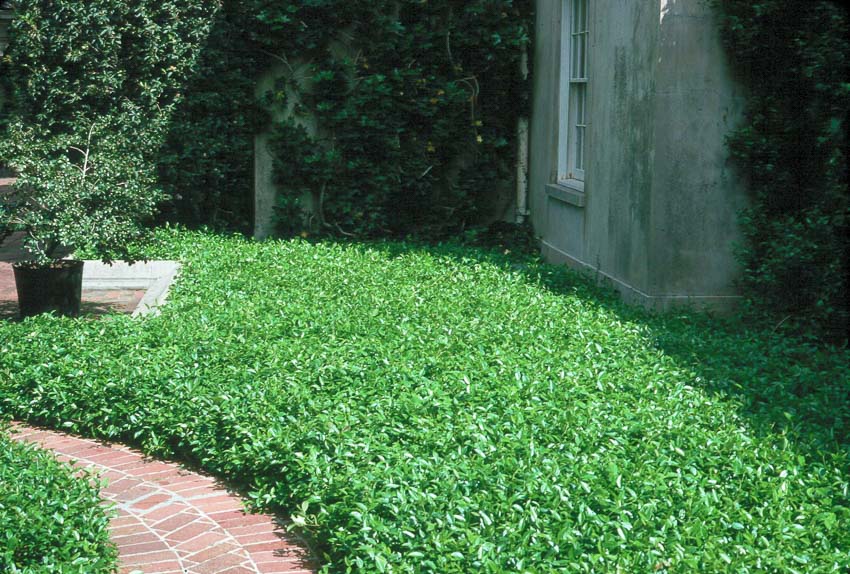Much of the beauty of nature lies in its simplicity. Finding the perfect ground cover for shade can add color and texture to your yard and provide a simple solution that brings that neglected part of your yard back to life.
Ground cover for shady areas can be decorative, low-maintenance, and help enrich your soil. From full shade to partial shade, various ground cover types will thrive in the low-light areas of your yard.
What is Ground Cover?
Ground cover is any plant used to cover the ground, and the term usually refers to plants that spread. Ground cover plants keep yards green and protect the ground from drought and erosion.
In terms of gardening, ground cover usually refers to low-growing perennial plants, meaning they return year after year, but some annuals make good ground covers as well. Many types of perennial ground covers are fast-growing and spread easily, making them useful in suppressing weed growth and covering bare spots where lawns struggle to grow.
The most common ground covers are herbaceous plants that grow less than a foot tall. Vines are another common type of ground cover, and some low-growing shrubs are often used in landscaping to cover large areas.
Other types of ground covers include ornamental grasses and mosses.
Uses for Ground Cover
There’s a lot to love about ground covers. Because there are so many types to choose from, it’s easy to find the right type of ground cover that will thrive in your yard.
Ground cover for your yard can serve multiple purposes, but people often choose it for a specific reason. No matter how much shade you have or how little water you can provide, there is a ground cover that’s ideal for your yard.
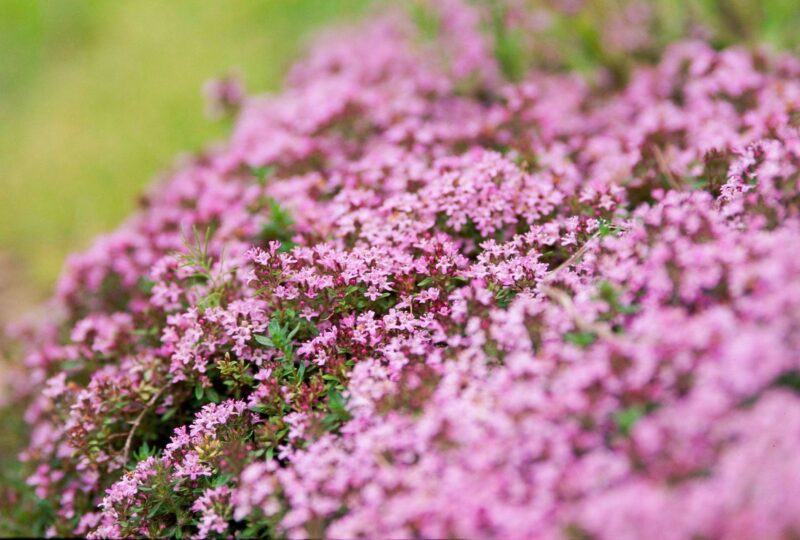
Decorative Purposes
As decorative plants, ground covers aren’t just a great way to cover embarrassing bare spots. Instead, they can be the focal point in a backyard garden. Even if they don’t flower, their foliage can add a new design dimension to your landscaping.
As a Low-Maintenance Solution
When it comes to problem areas in your yard, ground cover is your best friend because it’s low maintenance. Once established, ground covers help you cut back on water usage and help prevent soil erosion, which is why many people are turning to ground covers as substitutes for lawns.
To Enrich the Soil
All ground covers protect and enrich the topsoil, holding it in place and keeping it from drying out. In agriculture, ground covers like clover and vetch are grown, then tilled into the soil. This practice improves the structure of the soil by adding organic matter and nutrients and keeping the topsoil from blowing away.
Backyard gardening enthusiasts often use ground cover for shady areas where grass won’t grow. To find the best ground cover for shade in your yard, assess the available light. Then, consider your options to find the one that suits you.
Don’t miss our guide to the Best Ground Cover for Sun!
Ground Cover For Full Shade
The fully shaded parts of your yard can be the most challenging to keep green. However, these plants make excellent choices when you need shade ground cover.
Hosta
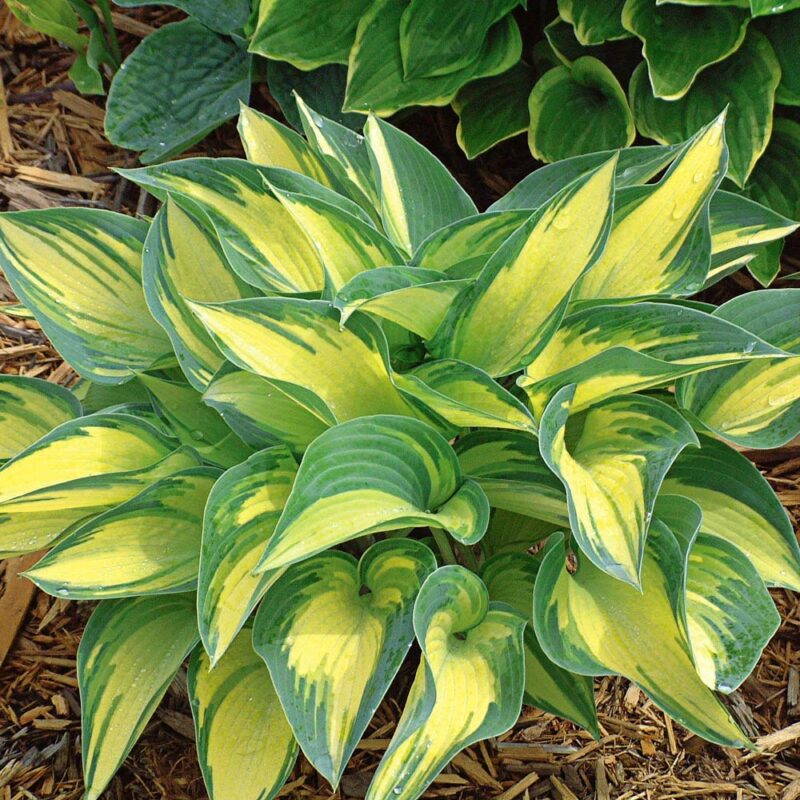
There are hundreds of varieties of hostas available in colors ranging from deep greens to blues, often variegated with yellow or white stripes. Hosta sieboldiana is one of the most common. The striking foliage is taller than many other types of groundcovers, but hostas can’t be overlooked when it comes to finding the best plants for shady areas.
In fact, hostas may be the best ground cover for shade because they thrive in low-light areas where many other plants fail. Like your lawn, they need rich soil and at least one inch of water per week to grow and spread quickly.
- Hosta sieboldiana
- Perennial
- Hardiness zones 2 to 9
- Enriched, moist soils with pH 6.5 to 7.5
- Height: 25 to 29 inches
- Flowering: large flowers in mid-summer
- Spread: via underground runners or seeds
- Also called Siebold’s plantain lily
Wild ginger
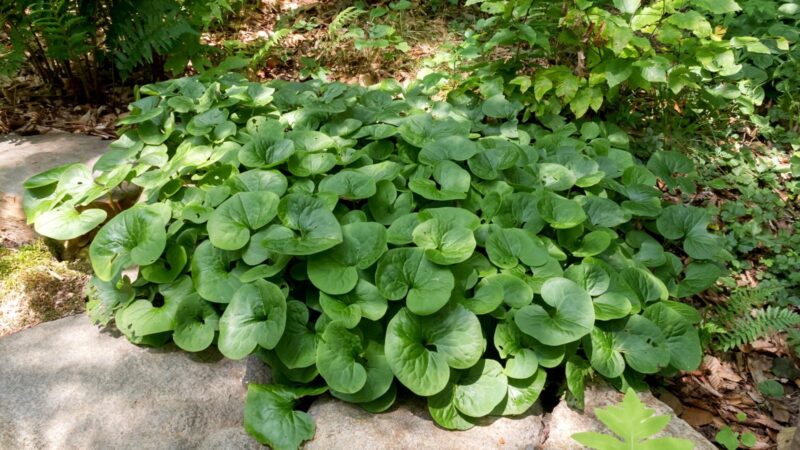
Even though it smells like ginger, don’t confuse it with the plant that produces ginger root. It has deciduous heart-shaped leaves and small flowers shaped like jugs.
Unlike most flowering plants, their flowers are hidden. As a result, this shady ground cover is low-maintenance and easy to care for.
- Asarum canadense
- Perennial
- Hardiness zones 3 to 9
- Humus-rich, moist soils with pH 6.0 to 7.0
- Height: 6 to 10 inches
- Flowering: brown flowers in early spring
- Spread: via stolon s , slow to medium growth
- Also called little jug
Ferns (Various Genera)
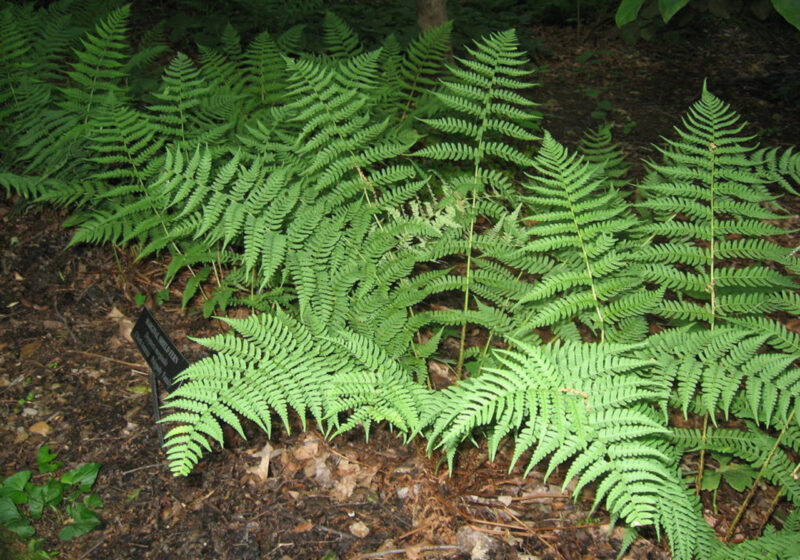
There are over 10,000 species of ferns, and several of them are successfully cultivated as ground covers. Ferns are shade-loving plants, requiring little care beyond watering once they are established.
Before choosing a type of fern to use as a ground cover, consider your end goal. Ferns like the royal and hay-scented varieties will fill large sections of your yard, while maidenhair and oak ferns provide dense foliage that covers your soil.
Flowering Ground Cover For Shade
While many shade ground cover plants produce flowers, some are better at it. As a result, they produce more flowers that last longer and attract more wildlife.
American Barrenwort
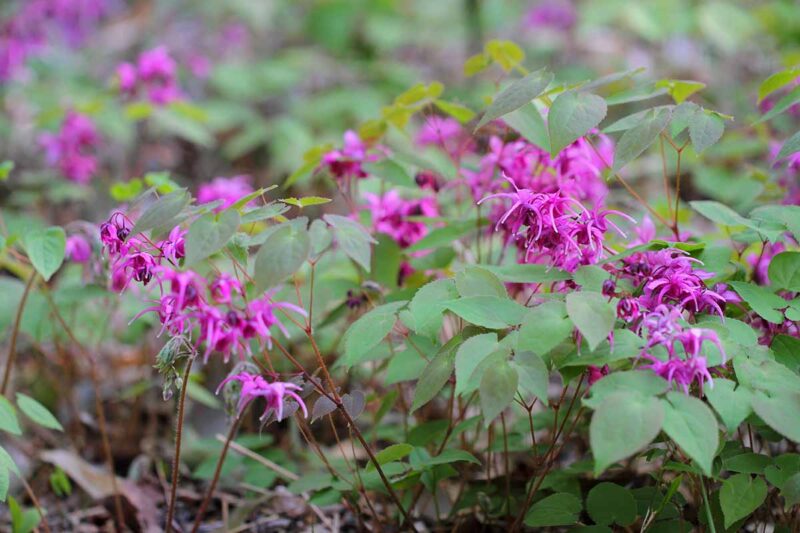
Like the barberry shrub, American barrenwort is a member of the Berberidaceae family. It is native to the Pacific Northwest coastal areas, growing naturally in the understory of dense forests.
At first, the plants form a small mound, but they will cover a thick patch as they get established. Small delicate white flowers that resemble miniature parachutists appear in late spring.
Vancouveria attracts bees and other pollinators, and the deep green foliage is resistant to deer.
- Vancouveria hexandra
- Perennial
- Hardiness zones 5 to 8
- Various soils, from clay to sandy, average moisture with a pH of 6.5 to 7.5
- Height: 8 to 16 inches when flowering
- Flowering: small white flowers in late spring and early summer
- Spread: slowly via rhizomes
- Also called white inside-out flower
Mazus
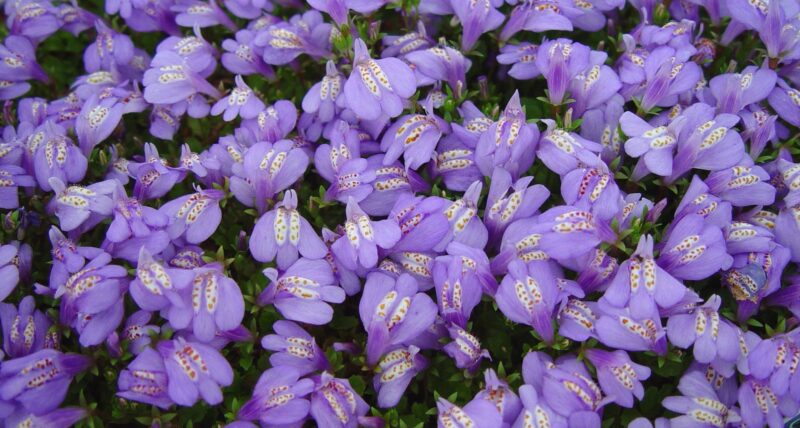
Native to the Himalayan region in Asia, mazus is a highly ornamental ground cover that grows less than six inches tall. It grows well in partial shade to direct sun, making it a perfect choice for areas of mixed light.
Mazus has a low profile, creeping habit that forms a dense mat of green foliage with bright flowers. It’s less well-known than many varieties of flowering ground cover for shade, but its ability to withstand hot summers makes it a favorite among many.
In areas with mild winters, it grows as an evergreen. It’s also an excellent ground cover for grapevines.
- Mazus reptans
- Semi-evergreen perennial
- Hardiness zones 5 to 9
- Enriched soils, medium moist with pH 6.0 to 8.0
- Height: up to 6 inches
- Flowering: small lilac or mauve flowers mid-spring to early summer
- Spread: via surface stolons that take root when they contact soil
- Also called creeping mazus
Bunchberry
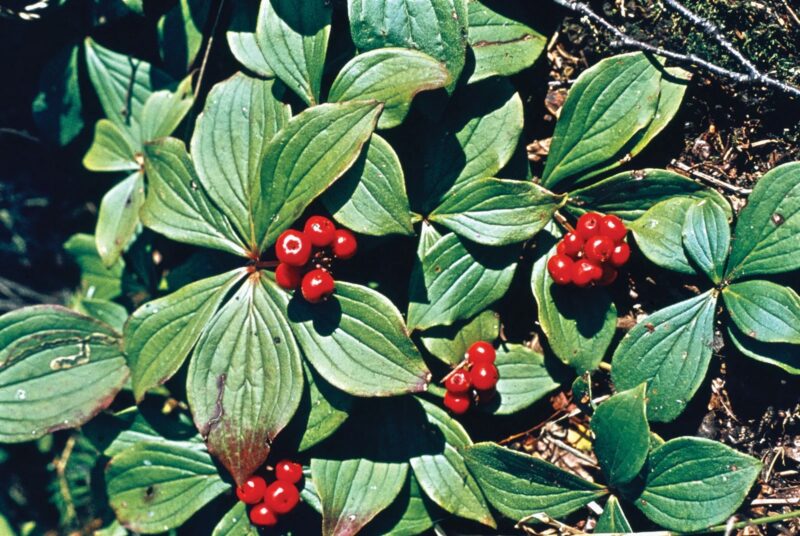
Bunchberry is native to forests and mountainous regions worldwide, including Japan, Russia, Canada, and the United States. It has shiny green leaves and produces white flowers in late spring, followed by bunches of bright reddish-orange fruit.
In the wild, birds and other animals forage on the berries. It does well in dense shade.
- Cornus canadensis
- Perennial
- Hardiness zones 2 to 6
- Moist, acidic soils with pH 6.0 to 8.0
- Height: 4 to 8 inches
- Flowering: medium green to white flowers in late spring and early summer
- Spread: via creeping rhizomes
- Also called Canadian bunchberry, crackerberry, ground cover dogwood, and creeping dogwood
Low Growing Ground Cover For Shade
Several types of ground cover stay well below six to eight inches without pruning. Some of the most popular low-growing ground cover plants for shade are also evergreens with flowers, like bugleweed and campanula.
Bugleweed

Ajuga, commonly known as the bugleweed, is a member of the mint family. It is common in Great Britain and Ireland.
Several cultivars vary in leaf and flower color, as well as different variegations, and some of these offer striking color combinations. Bugleweed is a popular evergreen ground cover that attracts butterflies and is resistant to pests like deer and rabbits.
- Ajuga reptans
- Evergreen perennial
- Hardiness zones 3 to 9
- Normal, sandy, or clay soils, average to moist with pH 4.5 to 6.5
- Height: 4 to 8 inches
- Flowering: various colors, mid-spring to summer
- Spread: quickly via underground stolons
- Also called carpet bugle, blue bugle, bugle herb, carpetweed, and St. Lawrence plant
Campanula
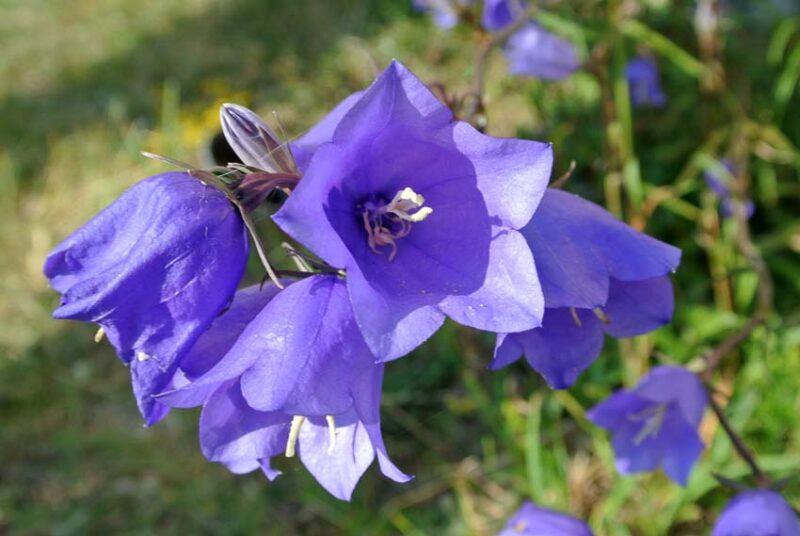
There are over 500 species in the Campanula genus and many subspecies, and they range in height from less than an inch to over 6 feet tall. Campanula species occur as annuals, biennials, and perennials.
The best species of campanula to use as a low-growing ground cover for shade is Campanula ‘Birch Hybrid.’ This species grows in low mounds of densely packed foliage with pretty blue bellflowers rising above the foliage. Dwarf bellflower grows best in partial shade to full sun.
- Campanula ‘Birch Hybrid’
- Perennial
- Hardiness zones 4 to 9
- Normal, clay, and sandy soils, average moisture with pH 6.0 to 8.0
- Height: up to 6 inches
- Flowering: blue flowers in early summer to early fall
- Spread: via plant divisions
- Also called bellflower, dwarf bellflower
Evergreen Ground Cover for Shade
Evergreen ground covers are popular for several reasons. They provide year-round color and aesthetic appeal and can attract beneficial insects because they offer shelter during the winter.
Like all ground covers, these evergreens help prevent soil erosion, and their roots can help stabilize the soil throughout the year.
Pachysandra
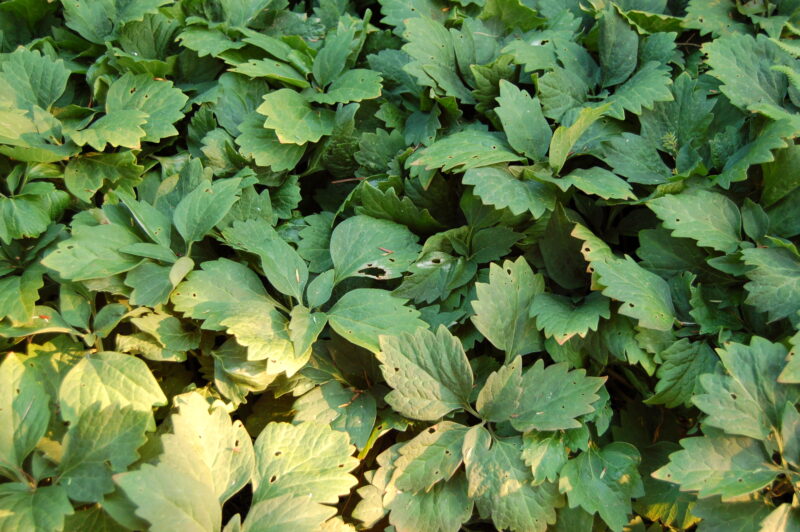
Japanese pachysandra, or spurge, is one of the most popular evergreen ground covers for shade. It is an excellent choice for poor soils, and while it is known to be an aggressive spreader, it spreads slower than most groundcovers.
As a result, it’s more deer resistant than many types of ground covers, especially when growth is thick. It’s recommended that you plant them close together to fill in faster, at the rate of about 20 plants per square yard.
- Pachysandra terminalis
- Perennial
- Hardiness zones 4 to 9
- Normal, sandy, or clay, average moisture with pH 6.0 to 7.0
- Height: 6 to 8 inches
- Flowering: White flowers in mid to late spring
- Spread: via rhizomes
- Also called Japanese spurge
Irish Moss
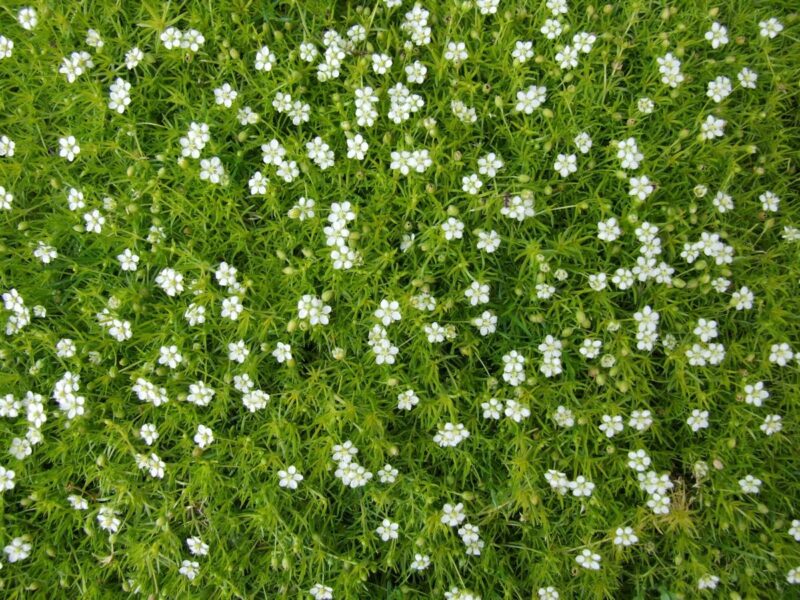
Another well-known and popular ground cover is Irish moss, often grown between flagstone pavers or as a lawn substitute. It isn’t actually moss, though, even though it looks like it.
With the right conditions, it’s easy to grow, but it won’t tolerate drought, full shade, or wet soils. Instead, it prefers partial shade to full sun, and as an evergreen, it tolerates foot traffic moderately well. Irish Moss is often cultivated in alpine or rock gardens but can be unattractive during the summer.
- Sagina subulata
- Evergreen perennial
- Hardiness zones 2 to 9
- Wide range of soils, average moisture levels with pH 5.5 to 7.0
- Height: less than one inch
- Flowering: tiny white flowers later spring to late summer
- Spread: via seed, self-sowing
- Also called heath pearlwort, awl-leaf, Scottish moss
Common Periwinkle

Common periwinkle is among the most well-known types of ground cover for shade, which is why it goes by so many names. It’s native to central and southern Europe and parts of southwest Asia and Turkey. It grows much like a vine but is a trailing subshrub or prostrate shrub.
Once it’s established, it tolerates dry shade. Its dark green leaves and small white flowers make it a popular choice as an evergreen ground cover. In addition, it tolerates a wide range of soil types and pH ranges.
- Vinca minor alba
- Evergreen perennial
- Hardiness zones 3 to 9
- Normal, sandy, or clay soils, dry to moist soils with pH 5.5 to 6.0
- Height: 4 to 6 inches
- Flowering: white flowers from early spring to early summer
- Spread: via new plants forming when stems contact the ground
- Also called myrtle, creeping myrtle, lesser periwinkle, small periwinkle, and dwarf periwinkle
Fast Growing Ground Cover for Shade
Two of the most well-known shade ground cover types are lamium and vinca. These are fast-growing ground covers that will quickly fill in large spaces. Their fast-growing habit makes them popular, but people also choose them because they are easy to grow and tolerate a wide range of soil types.
Yellow Archangel
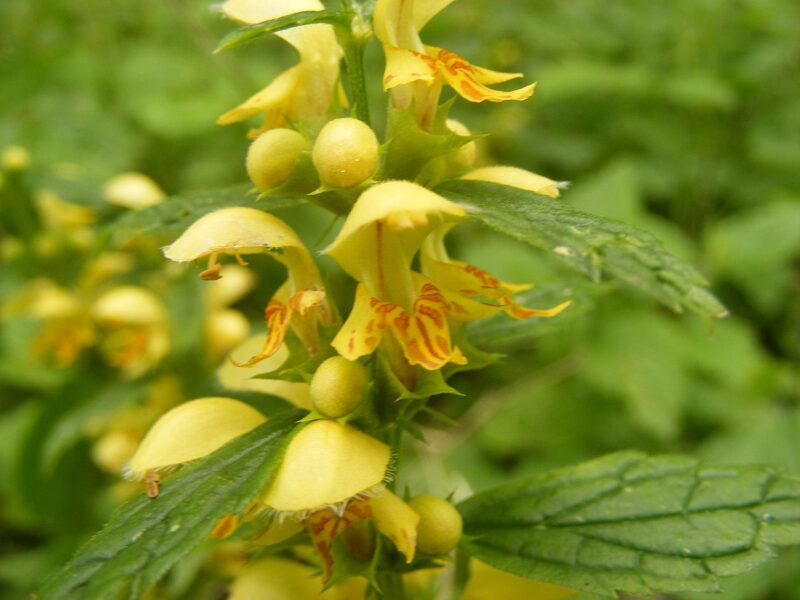
Lamium, commonly known as yellow archangel, is a popular fast growing ground cover for shade because it tolerates a wide variety of soils. In Europe, it is a pervasive wildflower. Use caution because it spreads easily on its own, and it can be invasive in some areas.
Variegated species are available with lavender or white flowers, such as the well-known White Nancy variety. Prune lamium down to six inches and water regularly to encourage lush growth.
- Lamium galeobdolon
- Perennial
- Hardiness zones 4 to 9
- Well-drained loam soils with pH 6.0 to 7.0
- Height: 16 to 30 inches
- Flowering: yellow flowers from spring to late summer
- Spread: via underground runners
- Also called artillery plant, aluminum plant, golden deadnettle, and yellow weasel-snout
Vinca
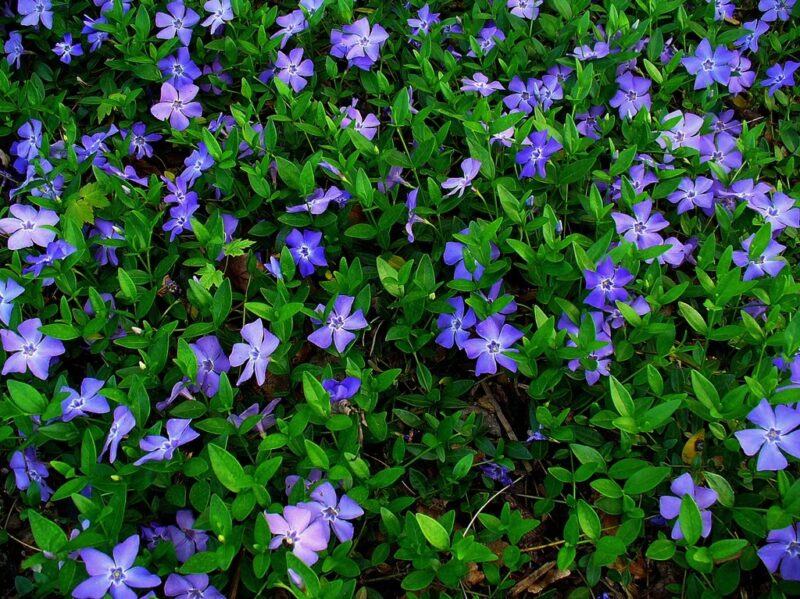
The Bowles variety of common periwinkle is the classic form, grown in many yards and gardens around the world. Once established, it will look great for years with a small amount of care. It loves shade but will tolerate some sunlight, and it grows thick if you mow it every two to three years.
Set plants about 12 inches apart in new plantings.
- Vinca minor ‘Bowles’
- Evergreen perennial
- Hardiness zones 3 to 9
- Normal, sandy, or clay soils, dry to moist soils with pH 5.5 to 6.0
- Height: 4 to 6 inches
- Flowering: deep blue flowers from early spring to early summer
- Spread: via stems rooted in the ground
- Also called myrtle, creeping myrtle, and blue periwinkle
Low Maintenance Ground Cover for Shade
One of the top reasons people like to use ground covers is that they are easier to maintain than lawns. Whereas lawns require a lot of water, care, and soil amendments to look great, low-maintenance ground covers are easy to grow with little effort.
You can save on landscaping expenses when you plant large sections of your yard in low maintenance ground cover for shade, but even more importantly, these plants will grow in the shade where most types of grass struggle to thrive.
Sweet Woodruff
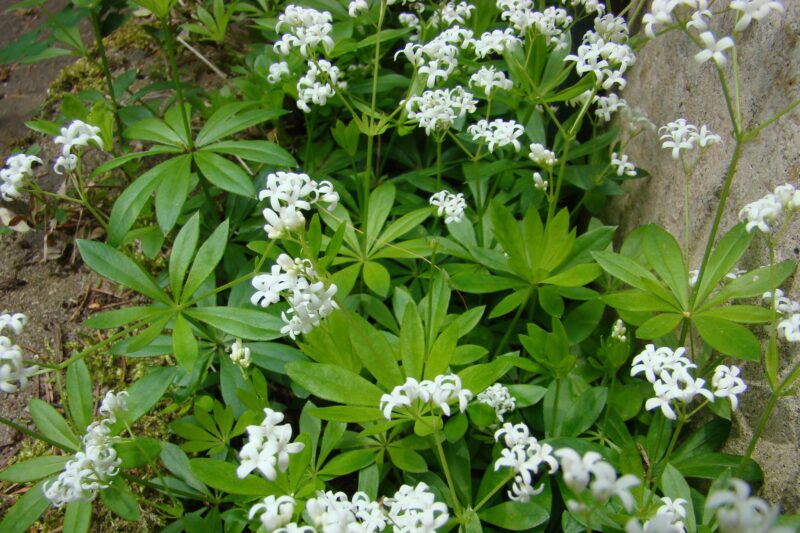
Sweet woodruff’s name comes from the sweet scent of its dried foliage. It is native to Europe, including parts of Russia and Spain, and has naturalized in parts of Canada and the United States.
Its hardy growth makes it resistant to deer and rabbits. The white flowers bloom in early spring and are used in potpourri and to flavor wines and jellies.
- Galium odoratum
- Perennial
- Hardiness zones 3 to 9
- Rich, well-drained, moist soils with pH 4.3 to 8.3
- Height: 12 to 20 inches
- Flowering: white flowers in early spring
- Spread: via stolons, slow to medium growth
- Also called sweet-scented bedstraw
Bishop’s hat
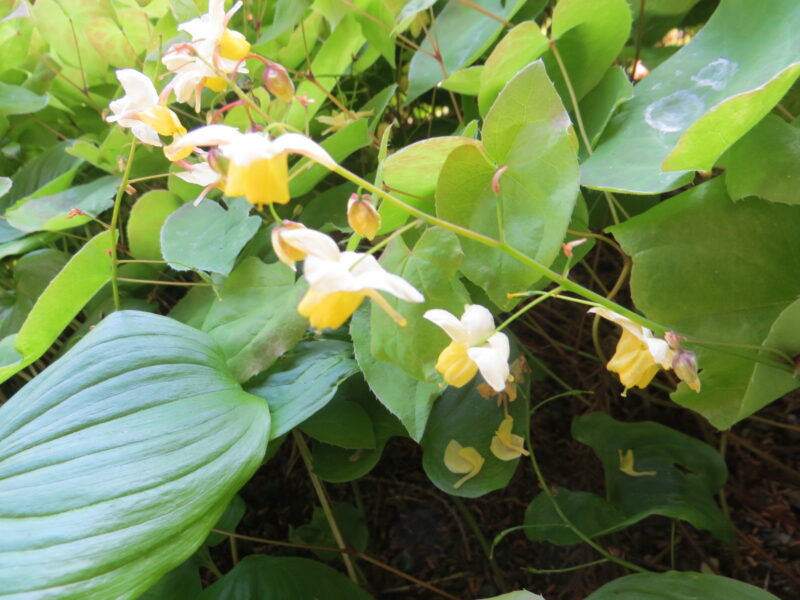
Epimedium is an herbaceous plant related to barberry, a common shrub. The name “bishop’s hat” comes from the shape of the flowers, which are produced in a wide range of colors, including bi-colored flowers.
These plants are available as deciduous or evergreen species, and they easily divide in the summer to produce more plants.
- Epimedium
- Perennial
- Hardiness zones 3-8
- Enriched soils, medium moist with pH 6.0 to 7.0
- Height: up to 12 inches
- Flowering: Yes
- Spread: via underground rhizomes
- Also called barrenwort, fairy wings, horny goat weed, and yin yang huo
Walkable Ground Cover for Shade
Not surprisingly, most of the ground covers that tolerate foot traffic are low-profile plants. Walkable ground cover for shade can create visual interest around pavers and stones and is sometimes used as natural paths in low-traffic areas.
Creeping Thyme
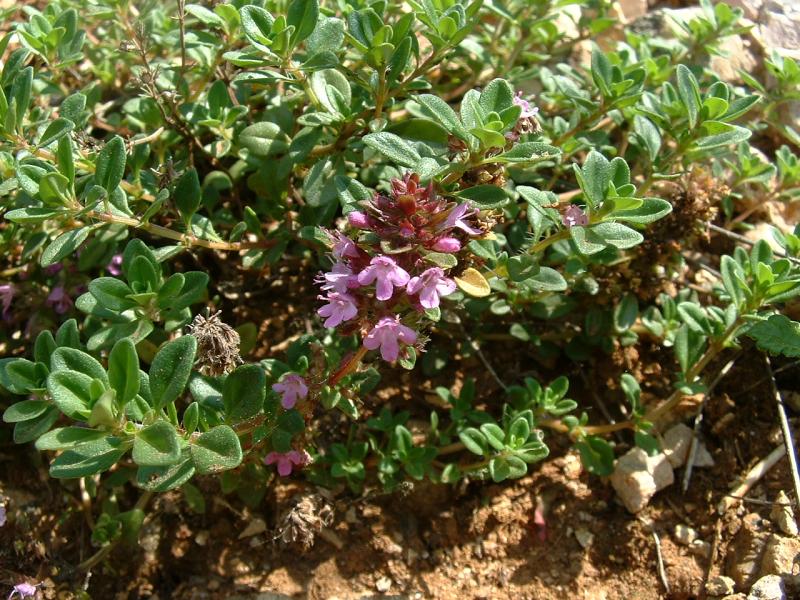
One of the easiest ground covers to grow is creeping thyme. It’s also one of the most popular. Its strong growth, low habit, and drought tolerance make it suitable as a lawn substitute.
There are several varieties of creeping thyme, all of which are closely related to culinary thyme. The plants produce thick mats of dark green foliage with various colors of flowers, including white, red, pink, rose, and lavender.
- Thymus serpyllum
- Evergreen perennial
- Hardiness zones 2 to 9
- Enriched soils, medium moist with pH 6.0 to 8.0
- Height: 2 to 4 inches
- Flowering: various colors in early to mid-summer
- Spread: via rooting at stem segments that contact soil
- Also called elfin thyme, mother of thyme, Breckland thyme, and wild thyme
Creeping Jenny
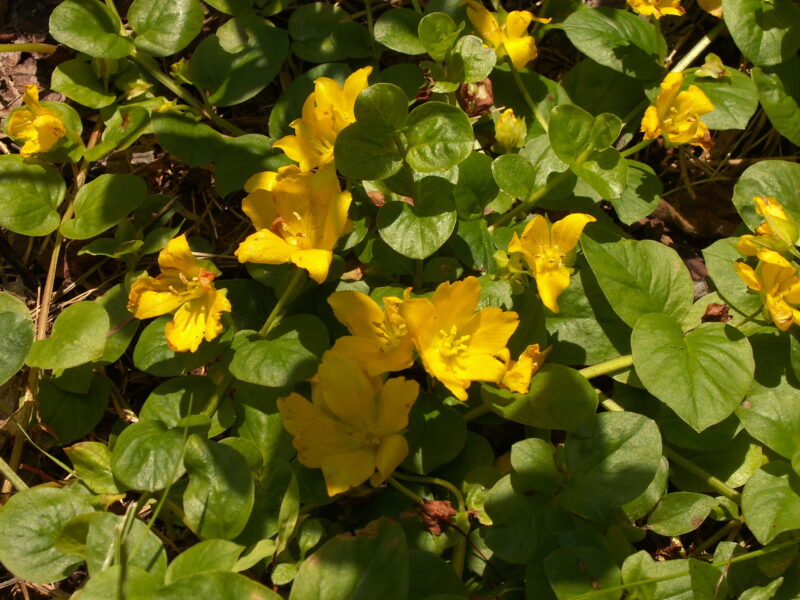
Easily one of the top choices for walkable ground cover for shady areas, creeping Jenny is easy to grow. At less than two inches, it has one of the lowest profiles of any ground cover.
Its leaves are round, which is where it gets its Latin name, “nummularia,” meaning “like a coin.” Its stems root into the ground wherever they make contact, and it will easily take over a rock garden. It also does well in containers and hanging pots.
- Lysimachia nummularia
- Perennial
- Hardiness zones 2 to 9
- Normal or clay soils, medium moist with pH 4.5 to 7.5
- Height: 2 to 4 inches
- Flowering: small yellow flowers in late spring to late summer
- Spread: via rooting stems and divisions
- Also called moneywort, herb twopence, and twopenny grass
Yellow Creeping Jenny
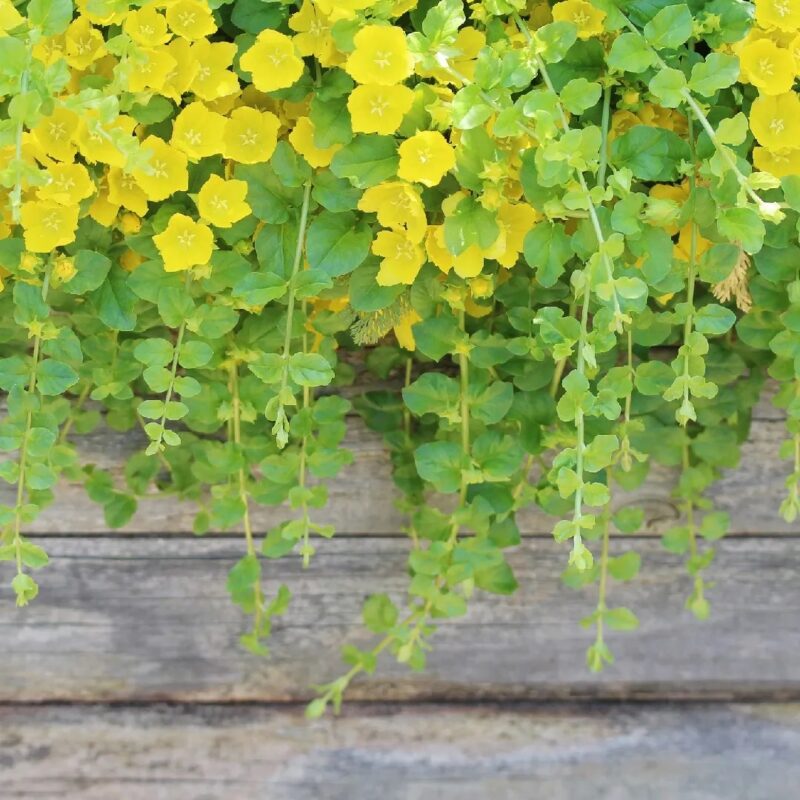
With more restrained growth habits than common creeping Jenny, the golden variety does well in rock gardens, containers, and borders. It grows best in partial to full shade and tolerates light foot traffic. It is an excellent foliage accent plant.
Combine yellow creeping Jenny with plants that have purple or bronze leaves, like coral bells or bugleweed, to create interesting color contrasts. Creeping Jenny will cascade over retaining walls, making it ideal for ground cover on steep terrain.
- Lysimachia nummularia ‘Aurea’
- Perennial
- Hardiness zones 2 to 9
- Normal or clay soils, average to wet moisture levels with pH 4.5 to 7.5
- Height: 2 to 4 inches
- Flowering: tiny bright yellow flowers late spring to late summer
- Spread: via seeds and rhizomes, can be invasive
- Also called creeping Charlie and golden creeping Jenny
Ground Cover for Partial Shade
Usually, at least one side of your house gets a combination of sun and shade throughout the day. Finding the right plants to grow in these areas can be challenging.
Ground covers that grow well in partial shade are an excellent way to bring color and texture to areas that don’t get direct sunlight for more than six hours a day.
Sweet Alyssum
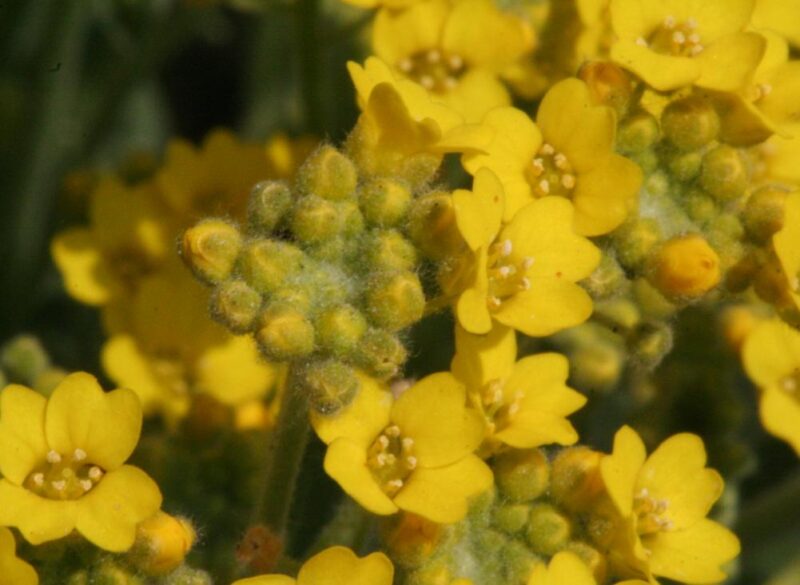
Sweet alyssum is a fast-growing annual that blooms throughout the growing season, and it’s an excellent way to add quick color to your landscape. It can be planted from annual starts after danger of frost or seeded directly into the soil.
The tiny bunches of sweet-smelling blooms appear on top of the low-growing mounds of plants. Several varieties are available, with flower colors ranging from white to lilac. It needs at least four hours of direct sun to flower well.
- Lobularia maritima
- Annual
- Hardy up to zone 8, can be grown as a short-lived perennial in zones 9 to 11
- Well-drained, rich soils, medium moist with pH 6.0 to 7.0
- Height: 3 to 9 inches
- Flowering: white, pink, rose-red, violet, yellow, and lilac all season
- Spread: via seed
- Also called sweet alison
Asian Star Jasmine
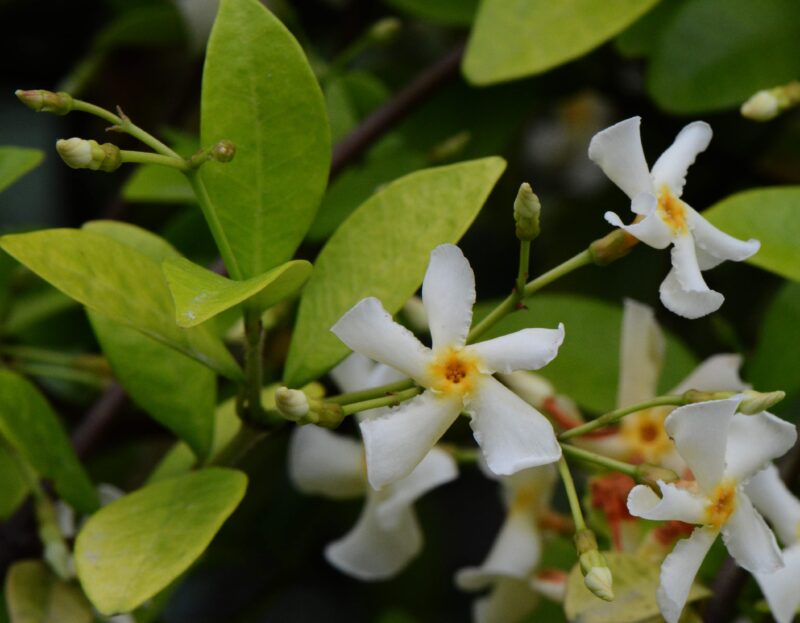
As the name implies, the flowers of the Asian star jasmine look like stars, and it’s native to Asia. It’s a fast-growing perennial plant that is often trellised to cover walls and fences and can also be used as a ground cover.
It grows to 20 feet when trellised, producing flowers and fruit with seeds. It’s less than six inches tall when used as a ground cover.
- Trachelospermum asiaticum
- Perennial
- Hardiness zones 7 to 11
- Loam soils with good drainage, average moisture with pH 6.0 to 7.0
- Height: 6 inches when grown as a groundcover
- Flowering: white or cream flowers in summer
- Spread: via lateral rooting when stems contact soil
- Also called Asiatic jasmine, yellow star jasmine, and Asian star jasmine
English Ivy
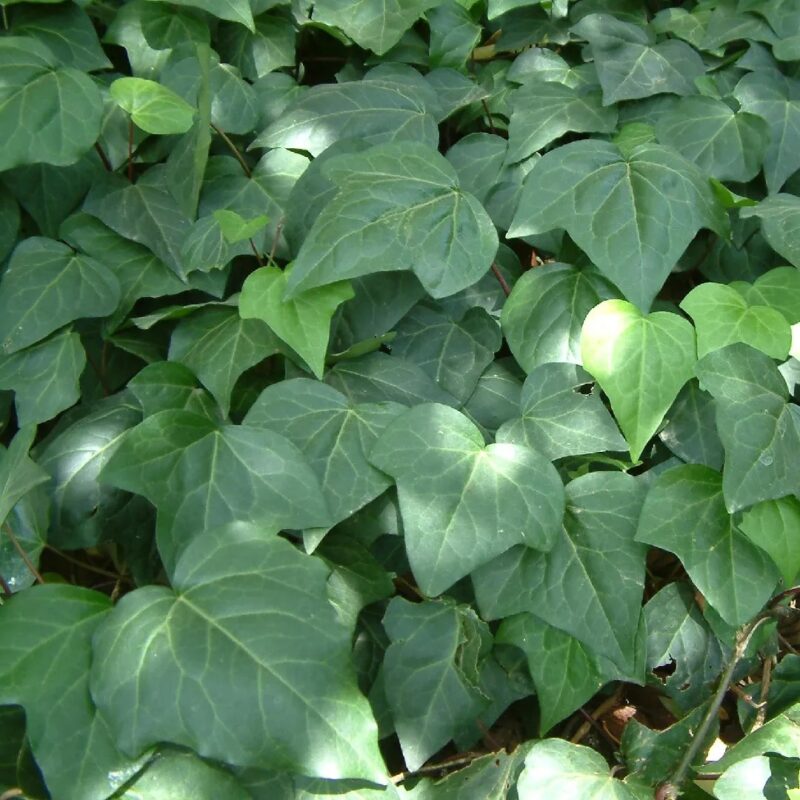
Often grown as a houseplant, you can grow English ivy in your yard, and it makes an excellent ground cover for partial shade. Instead of climbing, it will spread out on the ground and develop thick green foliage.
English ivy is a perennial in many climates, but while it’s hardier than many people realize, it won’t survive if the temperature drops below 10°F (-12°C). Ivy tolerates full shade to full sun, making it a uniquely versatile plant.
It takes years to reach maturity, at which time it produces berries. Be careful, though, because all parts of this plant are toxic and can be deadly to humans and animals.
- Hedera helix
- Evergreen perennial down to 10°F (-12°C)
- Hardiness zones 4 to 9
- Normal, sandy, or clay soils, dry to moist with pH 5.5 to 6.5
- Height: 4 to 6 inches when growing laterally
- Flowering: no
- Spread: via roots at nodes that contact soil
- Also called common ivy and European ivy
FAQs About Ground Cover Plants for Shade
Which ground covers should I plant under trees?
Deciding what type of ground covers to plant under the trees in your yard depends on a few factors. How much sunlight gets through your tree’s branches, the type of soil, and the type of activity that occurs in that part of your yard will all play a part in helping you choose the best one.
For the best results, choose from popular ground covers for shade, like vinca, lamium, and pachysandra.
What are the fastest-growing ground covers for shade?
There are several types of fast growing ground cover for shade. Creeping thyme and yellow archangel are two excellent choices.
With the right conditions, plants like hostas and ferns will also grow quickly in the shade. And don’t rule out English ivy, which can be used to quickly fill in bare spots by allowing it to grow laterally on the ground.
Is there a ground cover for shade areas that flowers?
Many types of shade ground cover will also flower. Plants like campanula, creeping thyme, bishop’s hat, and sweet woodruff flower during part of the growing season.
If you have at least four to six hours of sunlight in an area, you can plant shade-tolerant annuals like sweet alyssum to add more color.

